Aurora australis spectacular caught across the nation after solar storm
Stunned Aussies looked skyward over the Mother’s Day weekend as a once in a lifetime showing of the aurora australis turned the night sky into a rainbow of coloured lights following a solar storm
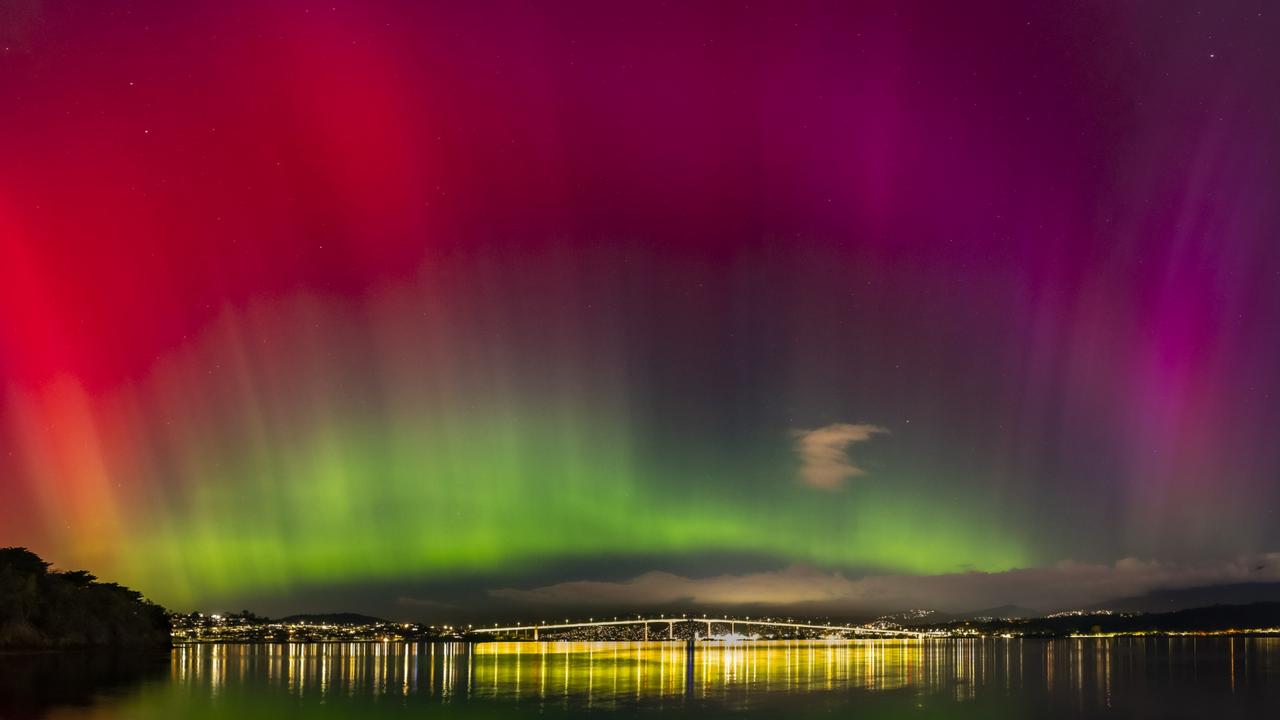
READING LEVEL: GREEN
Aussies have been left captivated by the rare sight of the southern lights after a massive geomagnetic storm lit up the skies over the Mother’s Day weekend.
Across the bottom half of the country, the breathtaking show turned the sky dramatic hues of pink, green and blue in a display that hadn’t been seen here in decades.
The light show was visible across the weekend, with the best time to see it between 10pm and 2am.
While Tasmanians sometimes experience the dazzling display of aurora australis, when the night sky is patterned with lights of different colours, those living in mainland Australia don’t often get to see the celestial phenomenon.
Over the weekend, social media users and professional photographers from the southern states of NSW, Victoria, South Australia and Tasmania shared snaps of the southern lights, with many expressing awe and wonder at the once-in-a-lifetime event.
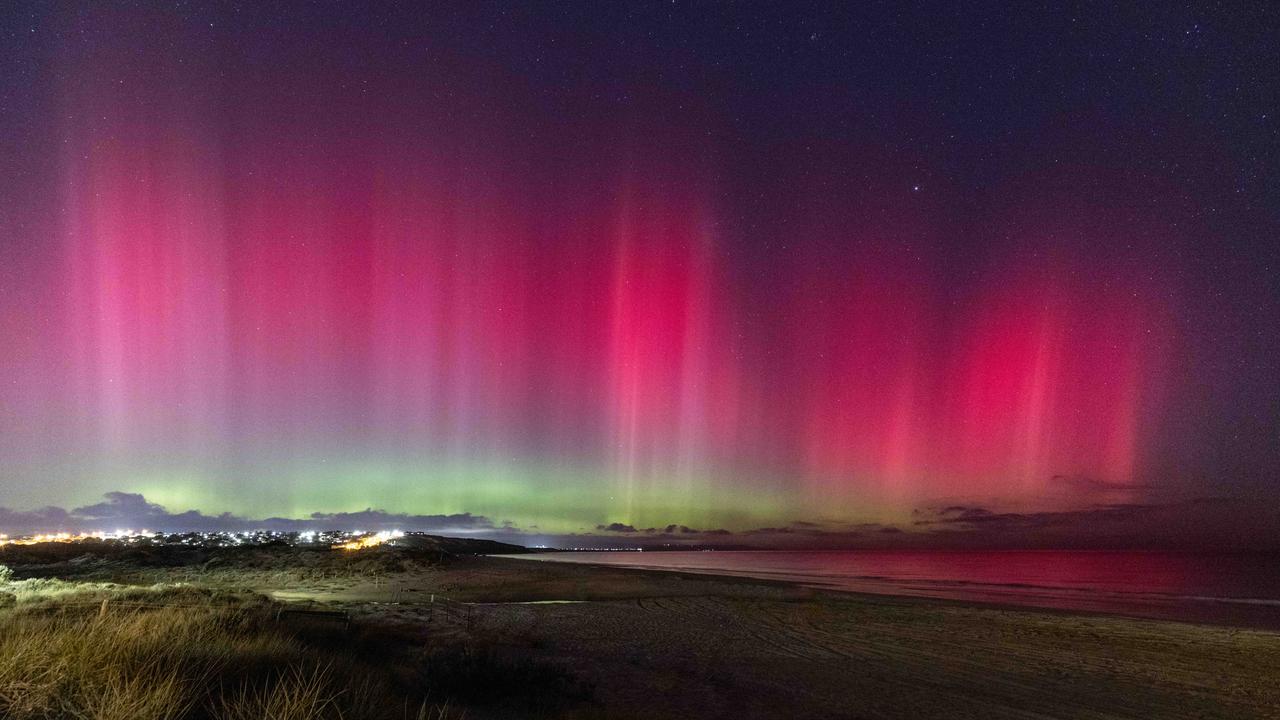
One dazzled central Victorian woman took to X to post an image she took from her backyard in the regional town of Eildon, saying: “I’ve been waiting all my life for this.”
Toby Royce, who witnessed the aurora australis from Melbourne’s Brighton Beach boxes on Saturday night, said it was a very rare sight that showed how beautiful the natural world is.
“It was great to see so many people out enjoying it together, there were so many families walking along the beach trying to catch a glimpse of the lights,” he said.
“It could be a once in a lifetime experience and opportunity to catch a glimpse from home in Melbourne.”
Incredibly, one photographer posted a picture of the phenomenon taken in Karratha in WA’s Pilbara region, which is further north than Mackay in North Queensland.
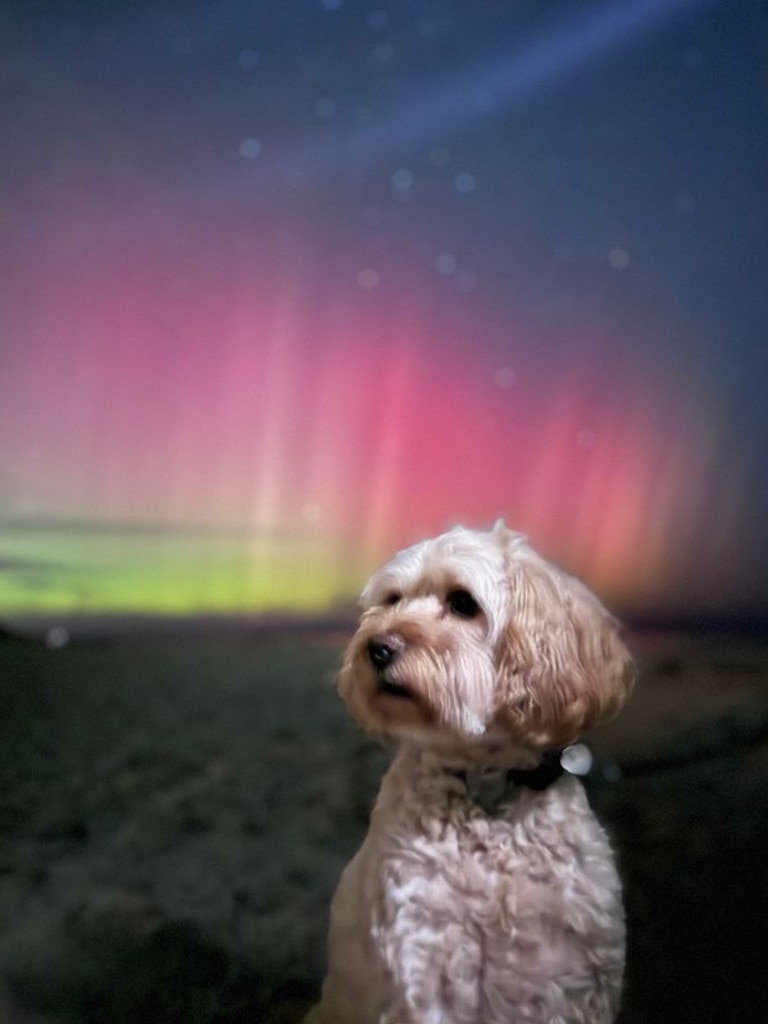

It came after a monster sunspot cluster 16 times the size of Earth spewed solar eruptions in our direction in the biggest geomagnetic storm in almost two decades.
The Bureau of Meteorology had issued an elevated geomagnetic storm warning on Friday to arrive about 8pm AEST, which resulted in bright auroras being visible at unusually low latitudes, or regions closer to the equator.
The US based National Oceanic and Atmospheric Administration’s Space Weather Prediction Centre issued a global G4 Geometric Storm Watch for the first time since 2005.
“This is an unusual and potentially historic event,” said centre director Clinton Wallace.
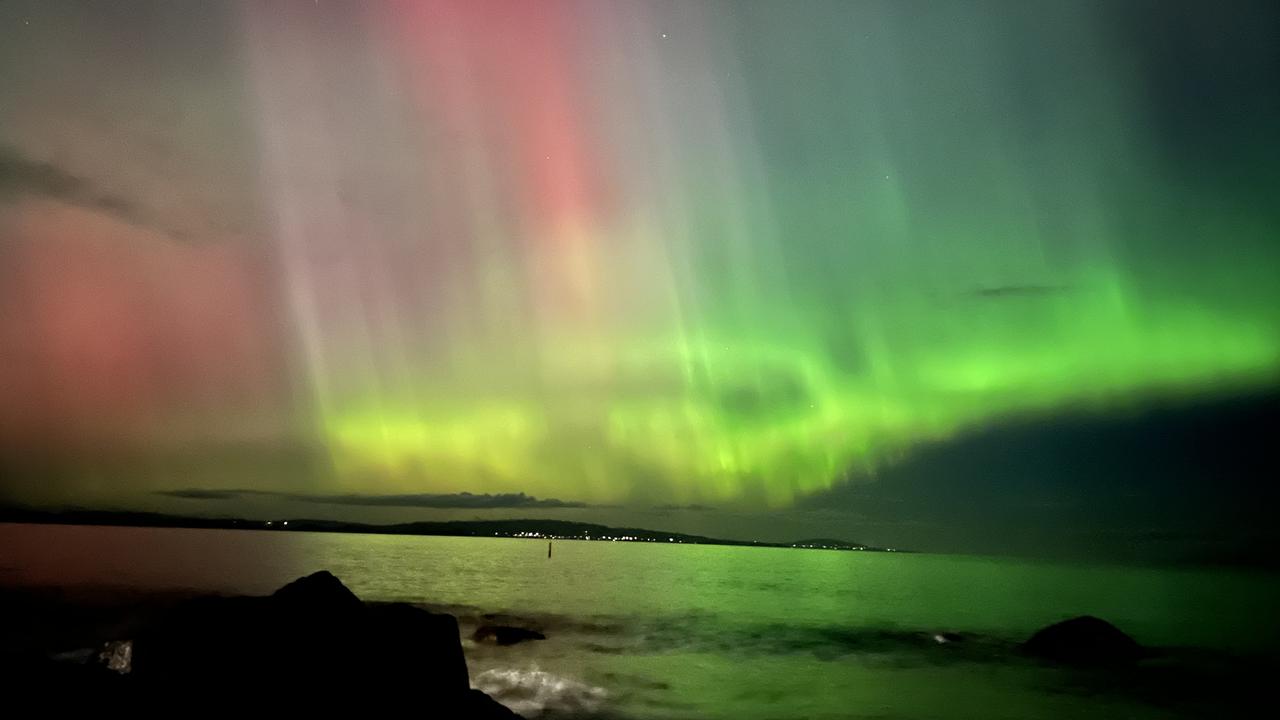
The G4 warning was for a severe storm, which is a measure of global geomagnetic activity, or the fluctuations in Earth’s magnetic field across the globe.
Such storms can sometimes interrupt satellite communications and electricity supplies, but there had so far been no reports of disruption in Australia. While a solar storm does have the potential to cause damage to power and radio networks, there is no direct danger to humans.
WHAT CAUSES THE AURORA AUSTRALIS?
The fluctuations in Earth’s magnetic field are caused by the sun erupting bursts of plasma and magnetic energy, known as coronal mass ejections. A series of solar flares and coronal mass ejections began on Wednesday.
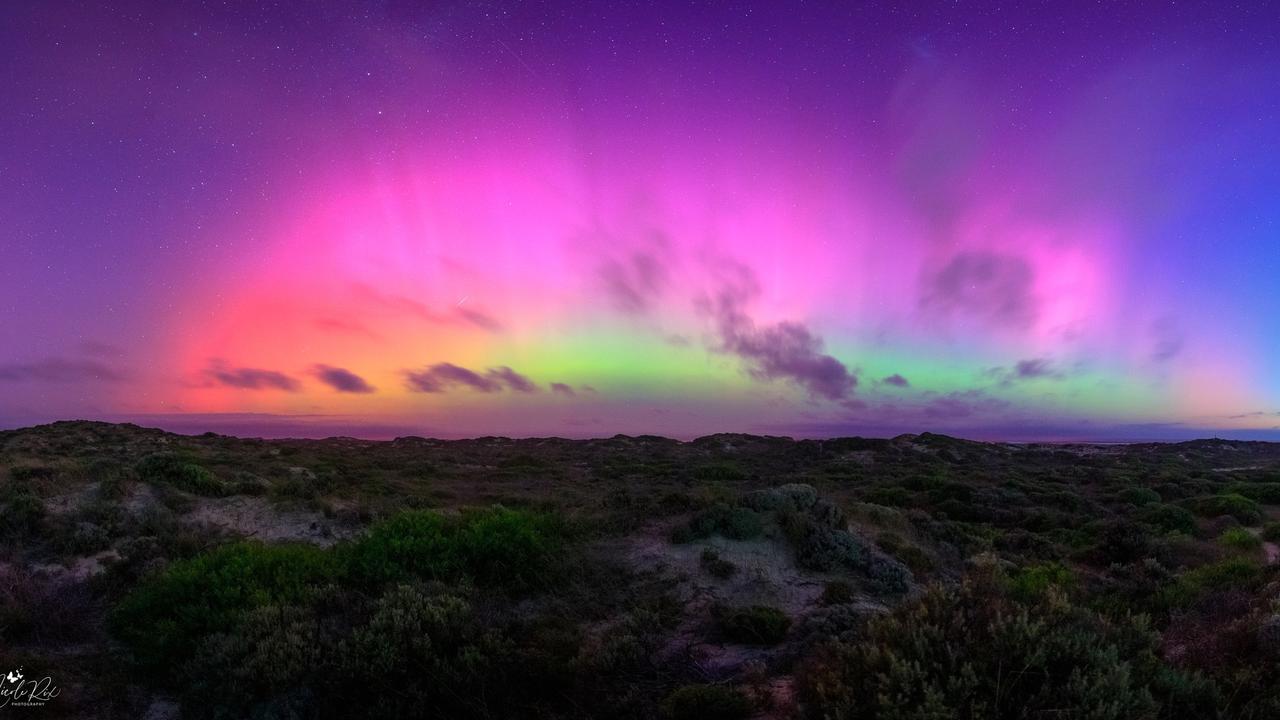
The disruptions interact with the Earth’s ionosphere, part of the upper atmosphere, and give off a glow around the north and south poles. Such storms increase people’s chances of seeing the aurora lights.
While a strong geomagnetic storm brings the possibility of seeing the aurora australis as far north as Sydney and Perth, mostly in dark sky environments away from cities, those in NSW mostly missed out on the display due to cloud and rain.
People living in the northern hemisphere were also treated to the colourful display of the aurora borealis, or the Northern Lights, as a result of the geomagnetic storm.
POLL
GLOSSARY
- solar storm: when the sun emits a huge burst of energy from an explosion (solar flare), which sends magnetic energy waves, or plasma streams, towards Earth
- celestial: happening in the sky or in outer space
- geomagnetic storm: a disturbance in Earth’s atmosphere caused by a solar storm
- auroras: a natural light display that shimmers in the night sky
- fluctuations: changes
- plasma: an electrified gas that the sun is mostly made up of
EXTRA READING
Meteors puts on cosmic show
Aurora australis puts on a stunning southern show
Australia’s most incredible weather photos
QUICK QUIZ
1. Which Australian states could see the aurora australis?
2. The southern lights are called the aurora australis, but the northern lights are called the aurora what?
3. What type of storm causes the aurora lights?
4. How big was the sunspot cluster that caused this aurora australis?
5. When was the last time a geomagnetic storm of this size occurred?
LISTEN TO THIS STORY
CLASSROOM ACTIVITIES
1. Aurora australis art
After looking at all the amazing photographs of the aurora australis Southern Lights from all over Australia, create an art work of your own.
Choose a special place or landmark from your town or city, sketch it with the colours of the sky and aurora australis surrounding it.
Use the photographs published in the Kids News story to give you inspiration of what it might have looked like.
Use an A4 white piece of paper for your artwork, and glue on to A3 coloured card to frame your work. You may like to display around the classroom or school.
Time: allow 30 minutes to complete this activity
Curriculum Links: Visual Arts, Science, Critical and Creative Thinking
2. Extension
“This is an unusual and potentially historic event.”
Why is this so? Explain why it was such a spectacular event for those that witnessed it.
Time: allow 10 minutes to complete this activity
Curriculum Links: English, Science, Personal and Social, Critical and Creative Thinking
VCOP ACTIVITY
Imaginative dialogue
Imagine you were there during the event being discussed in the article, or for the interview.
Create a conversation between two characters from the article – you may need or want to include yourself as one of the characters. Don’t forget to try to use facts and details from the article to help make your dialogue as realistic as possible.
Go through your writing and highlight any punctuation you have used in green. Make sure you carefully check the punctuation used for the dialogue and ensure you have opened and closed the speaking in the correct places.

